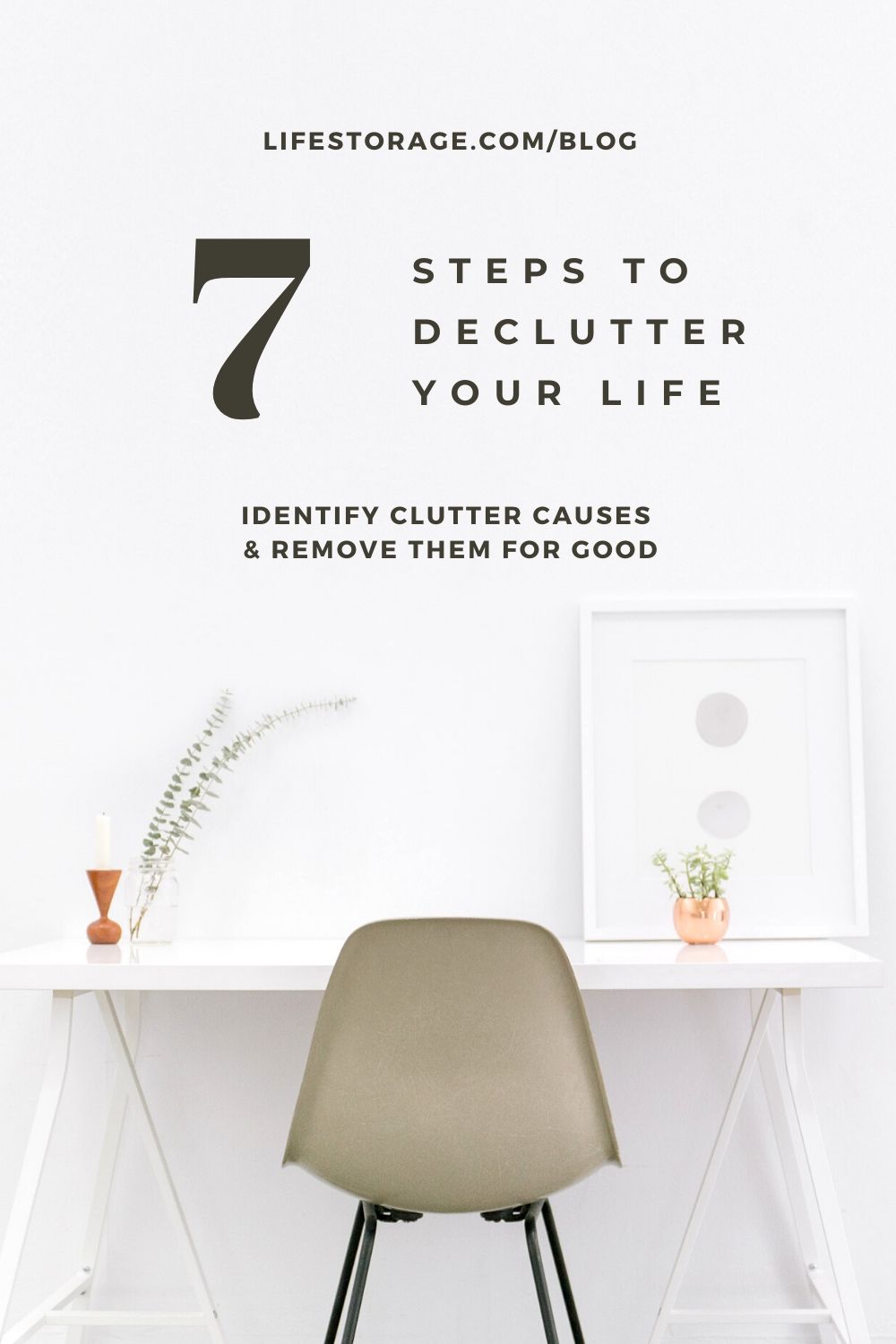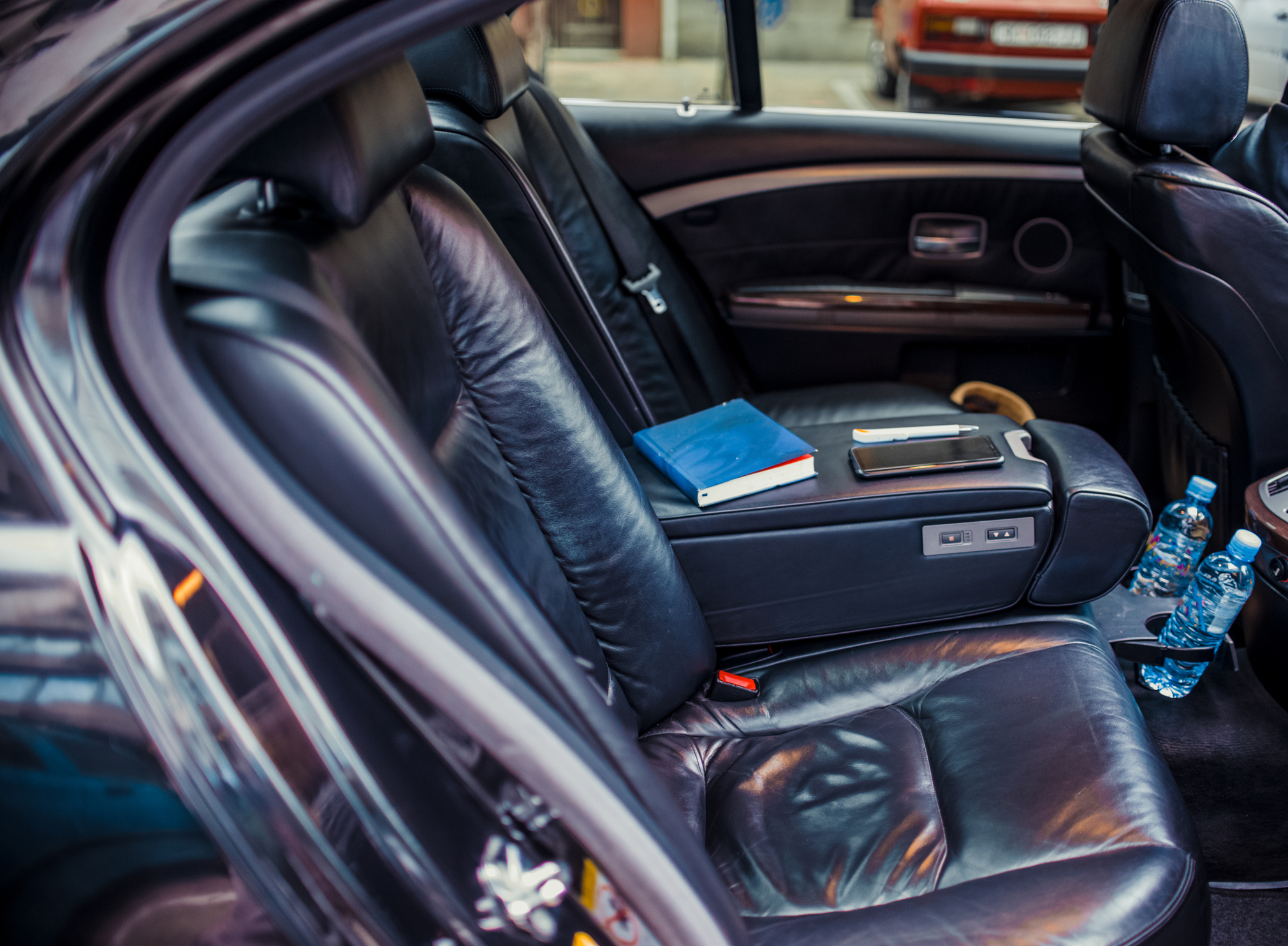
In today’s fast-paced world, it’s easy to feel overwhelmed by the constant influx of stuff in both our physical and digital spaces. Email inboxes feel endless, the to-do list is ever-growing, and online shopping makes it far too easy for packages to pile up in the blink of an eye.
If you’re reading this article, it probably won’t surprise you to hear that a clutter-filled life leads to a stress-filled life. When you can’t find what you need when you need it, you’re left with mad dashes in the mornings, more messes to clean up at night, and no time in your busy schedule to deal with it all. Clutter has an uncanny way of creeping itself into all areas of life–your home, at work, in the car… everywhere!
Unmanageable surroundings make us feel out of control in general, and you may be here because you’re feeling the need to reclaim your life and space from clutter. Luckily, we’ve created this “Declutter Your Life Guide” to help you along your decluttering journey. Maybe you’ve never decluttered your home before and aren’t sure where to start because it all feels so overwhelming. On the other hand, you might need help adopting a new mindset, setting schedule boundaries, or being more mindful and productive at work.
Whatever your situation, this article will answer all your burning questions while providing actionable tips on how to declutter your life. (In more ways than one!)
How to Declutter Your Life: 7 Steps for Simpler Living
Our 7 steps to decluttering your life address all of the places in life that can quickly fill up with both physical and figurative clutter, including:
- Your mindset
- Your schedule
- Your work-life balance
- Your physical space
- Paper files
- Your car
- Your digital space
After reviewing each of these areas, we hope you can devise your game plan and start tackling your goal of a decluttered life. We’ve included links to other articles along the way for further reading on just about every area, too.
Step 1: Adjust your mindset
If you are serious about decluttering, looking honestly at yourself and your behaviors is a great way to start. What habits have you fallen into that caused the clutter in the first place? Are your expectations for home organization realistic, considering your schedule and the demands of life? Only after you’ve understood some of your root clutter-causing problems can you begin correcting them. Don’t be afraid to sit with these questions for a while before you start— you can also journal about them if it helps!
Next, get clear with yourself about why you want to declutter. Would you like to make space for a new hobby in your home? Are you trying to make some extra cash by selling your excess? Are you downsizing or moving from a house to an apartment in the near future? Focusing on your goal throughout the process will remind you that decluttering will be worth the effort. Consider writing down your goal and displaying it in your home as you work on decluttering your life.
Decluttering doesn’t mean you are only re-organizing your material items, though. It can also mean you are simplifying every aspect of your life. Along with evaluating your current habits and focusing on your goal, start identifying ways to simplify your life in general. Perhaps this is the time to do less as well as have less.
How should you mentally prepare to declutter your life?
Here are some great habits and mindset shifts you can adopt if you’re looking to simplify your life beyond getting rid of excess stuff:
- Adopt some aspects of minimalist living. (Take some advice from an uncommitted minimalist in our article on how to live minimally.)
- Try a digital freeze. Let go of your phone and apps for one full day a week and reconnect with your hobbies.
- Turn off the TV or the news and free yourself from the constant need to be in the know all the time. It’s great to be well-informed on current issues, but taking a break can be incredibly helpful for your mental health.
- Make a concerted effort to reduce screen time in general. This can help decrease cortisol levels, lower anxiety, and stabilize mood.
- Take some more time for yourself and be comfortable saying “no.” Prioritize what is most important to you, accomplish those goals first, and then make time for the rest.
- Practice mindfulness to give yourself the mental space needed to make good decluttering decisions.
Related: How To Live in a More Simplified Home
Step #2: Declutter your schedule.
In conversations about decluttering, we often talk about physical spaces. But remember: Our schedules are often a catalyst to clutter, too. When we are overbooked, we rush from one place to the next with little time to put things where they belong. Busy folks are also more likely to feel scatterbrained. And while these increased stress levels are normal to experience occasionally, constant or chronic stress can lead to burnout, leaving you less likely to want to do much of anything— let alone keep your house tidy!

Decluttering your life starts with your schedule
If you’re not a naturally organized person with a color-coded calendar and days planned down to the minute, don’t panic. Keeping a planner is a great idea, but decluttering your schedule can be as simple as taking an honest look at all of your commitments and determining what can (or should) be cut out.
Start by writing down any upcoming must-do events and tasks. Next, carefully consider the remaining tasks on your list. Are they worth the time and effort to keep in your schedule? Do you over-schedule yourself without building in breaks throughout the day? Maybe you over-exert yourself at post-work social events instead of prioritizing your health and wellness. By thinking through your upcoming weeks and months in advance, you can better prepare for upcoming events and avoid chaotic days that inevitably lead to more clutter.
Schedule Clutter-Reducing Idea: Do you have trouble coordinating schedules with family members? Try a digital calendar to keep everyone informed and on the same page. (Google Calendar is free and works great!) By sharing it with multiple users, everyone can access it (via app or computer) and add to it as needed.
Schedule Clutter-Reducing Idea: Meal planning can also be a way to “declutter your schedule,” so to speak. By planning your meals from a weekly perspective, you’ll know just what to grab from the grocery store instead of buying a whole bunch of food you might feel like cooking up, depending on what you’re craving. If you know what you need before heading to the store, you’ll buy less fluff and create less waste later on, too. You’ll also bypass the dreaded “What should we do for dinner?” question at the end of the day. Keep yourself and your family on task and well-fed during a busy week by planning and preparing meals ahead of time.
Step #3: Examine your work-life balance
If you work full-time (or even part-time!), you already know that your job can take up a lot of your time. That’s why decluttering at work is also a great way to create more balance for yourself on an everyday basis. Take the time to clear off your physical workspace, whether that’s the desk in your home office, the cubicle you work in every day, or any physical space you use to do your job. Similar to wanting a clean kitchen before you start cooking, a tidy workspace leads to a focused worker. (You’d be surprised by how much more productive you can be with a clutter-free workspace!)

Once you’ve addressed the literal clutter at work, it’s time to look at the ways that your job can clutter your mind. Are you completely burnt out at the end of the workday or workweek? Do you come home from work lacking the motivation to take care of yourself, spend time with loved ones, or engage in hobbies that make you happy? Determine your priorities and set goals on how much time and effort you want to commit to your job. It may require a bit of tough love, but consider a new job or career change if you find that your current situation isn’t working for you.
Related: Moving to a New City for a Job? 5 Secrets to Surviving the Move
Step #4: Tackle your physical space
As we’ve mentioned, the act of decluttering goes beyond the physical. But once you’ve addressed some of the figurative clutter in your life, you should also assess the physical clutter in your immediate surroundings, too. That can include weeding through your belongings, donating items that no longer serve you, and setting up organization systems to help you keep your home clutter-free in the long run.
Home Organization & Decluttering Tip: When it comes to home organization, it can feel like a constantly changing cycle. Embrace the change! What worked for your family last year, or even last season, may not carry into the next. As work, school, and daily habits change, so must your home organization. Try not to get stuck in a habit that no longer serves you, and adjust your family’s routine as needed.
Here at Life Storage, we’ve published many helpful how-to guides regarding decluttering and home organization. Check a few of them out below for more information on the best methods to declutter your life based on your unique needs and goals:
- How to Declutter on a Budget: 5 Essential Decluttering Tips to Save Money
- The Best Resale Apps to Help You Downsize and Declutter Your Home
- Introducing: The Ultimate Guide to Home Organization
Step #5: Organize your paper files
Sorting and storing your important documents could be one of the most beneficial steps of decluttering your life. Even though we live in a digital-first world, paperwork still seems to constantly pile up, from health insurance information and medical bills to junk mail and coupons from your favorite store.
Investing in a filing system that can keep your sensitive information safe is vital. And taking the time to find a method for storing through all of your daily papers and mail is just as imperative. Make a habit of filing your mail and any paper documents daily. Admittedly, this is a tough habit to create, but when successful, it keeps the task manageable and way less overwhelming than if you decided to put it off for weeks. Toss or shred any unwanted or unnecessary documents, and file anything you need to keep in a file organizer or filing cabinet.
When it comes to sentimental papers such as cards and photos, it’s easy to get caught up in the memories mid-organizing. This holds many of us back from actually getting anything done. Even so, there are great techniques out there for getting these types of papers in check. Here are some fun ways to repurpose sentimental cards to get some use out of them by putting them on display, and here are our top tips on photo organization.
Related: Preserving the Past: 5 Ways to Save and Store Newspapers
Step #6: Don’t forget your car!
The car is almost like a mobile office for most of us, especially if you live an on-the-go lifestyle. Between picking up family members, commuting to and from the office, and waiting for the next time to shuffle the kids off to school or one of their many activities, random items tend to pile up in the small space that is your car.

For that reason, this is a space that needs to be cleaned often, but keeping it organized will also help keep it clutter-free. At the very least, add storage compartments to your seat backs and pockets to make space for those random necessities like tissues, emergency kits, and charging cables. And, of course, have a spot to stash trash. (Just make sure to empty it on a regular basis!)
Finally, set resolutions as a family that whatever you bring into the car leaves with you. This should decrease the piles of shoes, water bottles, and toys that need to be emptied out of the trusty family vehicle at the end of the week.
Step #7: Declutter your digital space
Your digital life requires just as much attention in your decluttering journey as your physical environment, if not more. The amount of information being presented to us when we pick up our phones or hop on the computer is overwhelming, to say the least. That’s why it can be incredibly helpful to be proactive about monitoring the number of inputs and stimuli we allow in our lives.
One great way to declutter digitally is to give yourself a clean slate in your email. Unsubscribe from extra newsletters and promotional emails that don’t bring you any value to keep the unneeded info out of your inbox. If your inbox is out of control, consider creating a new one. You can always set up important accounts under your new address one by one as opportunities present themselves, such as due payments.
Computer files can also be overwhelming, especially if you’ve been operating on the same desktop or laptop for years. Without any kind of organization system in place, your computer can be another place where clutter enters our lives.
Take some time to organize files in a way that works for you. Use folders and back everything up on external hard drives. Upload your cell phone photos and files onto your hard drives or digital drives as well. Losing digital information is frustrating, so keep a schedule and backup files often so you aren’t relying on unpredictable computers and phones to preserve important media files. Just be sure to take the time to place items in the right files when you do to keep from cluttering up your computer again.
Resolve to stick to your new filing system going forward so you’ll never have to spend time organizing digital files again!
Related: How to Store Old Photos and Preserve Precious Memories
Where Do You Start When You’re Feeling Overwhelmed With Clutter?
Sometimes the physical process of decluttering is enough to reset yourself for a fresh start, but other times you need to declutter more than just stuff. Take time to evaluate all aspects of your life that need some clearing.
Maybe you need to set small goals for yourself, delegate new chores to family members, or put some mental health boundaries with co-workers and friends. Whatever the case may be, now is the time to process all the extra and purge. Hopefully, these tips will help you declutter your life and start you off with a clean slate.
Editor’s Note: This post was originally published on January 19, 2018, and was revised on March 12, 2020 & July 11th, 2023.


